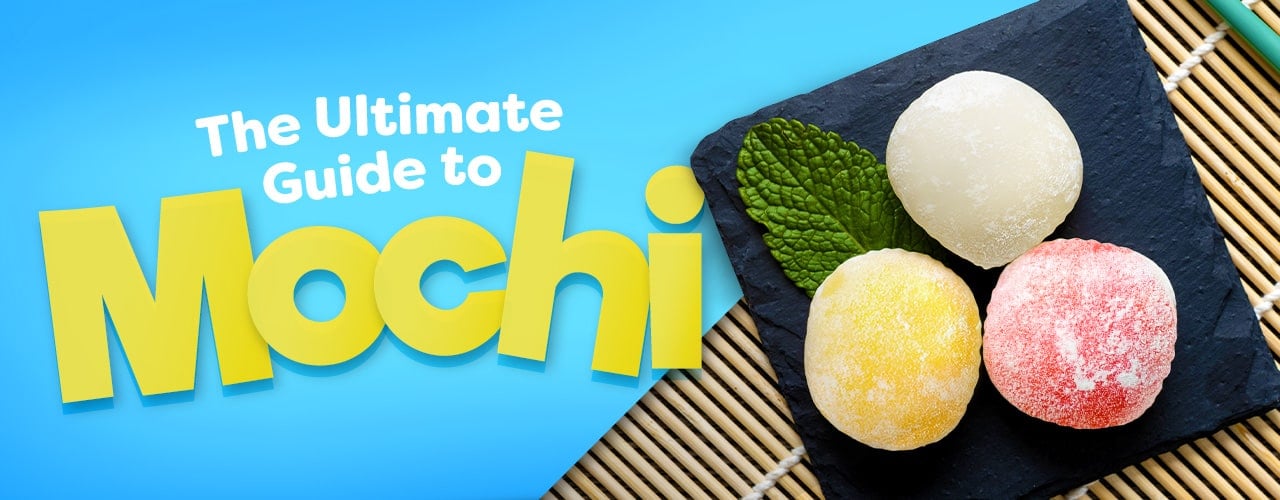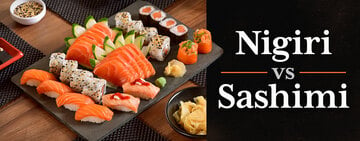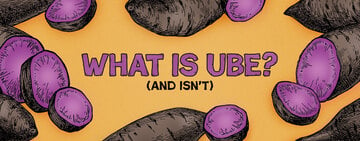Mochi Explained
Mochi, pronounced "mow-chee", is an age-old food tradition in Japanese culture, which has also brought us miso and ramen. Today, mochi is offered all around the world and in many different forms. If you’ve always wondered what mochi is, how to make it, or where it first originated, we’ve compiled all of this information for you. Continue reading to learn more!
What Is Mochi?

Traditional mochi is a Japanese dessert made of whole rice grains or glutinous rice that is beaten with a wooden mallet until it becomes a flexible paste. There are several types of mochi, which all contain differing ingredients.
Because mochi has such a soft, slightly gummy texture, it is considered a choking hazard if not eaten properly. Mochi needs to be chewed and not swallowed whole like many people do as they eat it for the first time.
We’ve listed out the various types of traditional mochi that you can add to your dessert menu.
Different Types of Mochi
- Daifuki - The most commonly found type of mochi is called daifuki, which is round in shape and filled with a sweetened bean paste and served as a nice cold treat.
- Sakura - Also shaped into a round ball, sakura (cherry blossom) mochi has a lumpier texture because it contains some whole rice grains. Sakura mochi gets its name by being served with a salted sakura leaf.
- Warabi - Mostly found in western Japan, warabi mochi is made from warabi starch, which comes from a type of fern. This mochi is translucent and has a soft, jelly texture.
- Hanabira - Often referred to as “flower petal mochi,” hanabira mochi is rolled out into a small circle, which is folded in half and served with white bean paste, miso, and a candied stick of gobo burdock root.
- Hishimochi - Cut into a diamond shape, hishimochi is a colorfully layered mochi treat that symbolizes good health, long life, fertility, and new life.
- Botamochi or Ohagi - Owning two different names, botamochi or ohagi is another kind of mochi rice ball that contains both chunky and smooth red bean paste inside.
- Kirimochi or Marumochi - Kirimochi is unsweetened mochi that is formed into rectangular blocks and packaged into a hard and dried form, which can be used later for cooking.
- Kusamochi - A mixture of sticky rice and yomogi, a Japanese mugwort plant, kusamochi is green in color, filled with red bean paste, and shaped like a flower.
- Kuzumochi - Made from the starch of the Japanese arrowroot plant, kuzumochi is a popular summertime treat that is clear in color and mixed with whole red beans or topped with sweetened red bean paste.
The Origin of Mochi
The original pounding process of crafting mochi started with individuals in East Asia who used glutinous rice as the main ingredient to make the soft, flexible dessert. Rice has been grown in China and Japan for thousands of years, and making mochi was seen as a delicacy to be used at religious gatherings and offered to the gods in Shinto rituals that were performed by the aristocracy.
What Is Mochi Ice Cream?

Mochi ice cream is mochi dough that is filled with a sorbet style ice cream, which comes in a variety of flavors. Many Americans mistake mochi ice cream as traditional mochi, but mochi ice cream was actually created by Frances Hashimoto in Little Tokyo, California in the 1980s to help maintain the neighborhood’s Japanese culture.
Spreading like wildfire throughout America in the early 90s, mochi ice cream became available at many Asian fusion restaurants in the United States. Choose to offer flavors like green tea, mango, strawberry, and vanilla bean to your customers. Whether your business buys it in bulk or by the pack, your customers will be happy to see a mochi ice cream option on your dessert menu.
Mochi Recipe
If you would like to make your own traditional style mochi, follow these steps for how to craft delicious red bean mochi!
How to Make Mochi
To prepare traditional daifuki mochi with red bean filling, you will need seven ingredients to make the special dessert. Follow these steps to make deliciously sweet red bean mochi.
Ingredients
- 1 cup of mochiko or sweet rice flour
- 3/4 cup sugar
- 1 cup dried azuki beans
- 3/4 cup sugar
- 1/4 teaspoon of salt
- 1/3 cup of water
- Potato starch for dusting
Instructions
Mochi Filling
- Create the filling first by rinsing the azuki beans with cold water and putting them in a large pot.
- Fill the pot with water so that the beans are covered and bring to a boil.
- Drain beans and fill pot with water again covering the beans.
- Bring water to a boil and then lower to a simmer for about an hour or until the beans are completely tender. Add water to beans if necessary to keep them covered with water.
- Drain beans.
- Puree beans in a food processor to make a smooth paste and add a tablespoon of water at a time if the beans are too dry when pureeing.
- Scrape the paste back into the pot and add the salt and sugar and stir.
- Cook over low heat for 10 to 15 minutes until you can tell that the water has been evaporated to leave a thick paste.
- Empty the bean paste into a container, spread it out into a thin layer, and place in the refrigerator to chill.
Mochi Dough
- To make the mochi dough, line a sheet pan with parchment paper and put a dollop of potato starch on the middle and fan it out into a large circle.
- In a medium-sized bowl, combine the sweet rice flour with 1/3 cup of water and mix until smooth.
- Pour the mixture into a saucepan through a mesh strainer.
- Add sugar, mix, and cook over medium to low heat for about 7 minutes or until dough gets thick.
- Cut the dough into 20 pieces with a starched knife and shape into a disk that is about 2 inches in diameter by using a small rubber spatula if needed.
- Remove filling from the refrigerator and take a small scoop of bean paste to fill the mochi disk.
- Slowly pull the mochi disk up around the bean paste and pinch the mochi to seal the ball carefully.
- Gently form the mochi into a round shape and enjoy immediately, or refrigerate covered for up to 2 days.
Mochi Variations
Since the popularity of mochi has increased, many creators have broken out to make their own mochi recipes. We’ve pulled together some of the most popular types of mochi-based recipes you can find today.

Mochi Donuts
New to the mochi scene are mochi donuts! Made with sweet rice flour and deep fried to perfection, you can enjoy a mochi donut topped with your preference of icing.
Matcha Tea Mochi
Crafted much like traditional mochi dough, matcha tea mochi is a mixture of all of the standard mochi ingredients with the added matcha powder to give it the green color.
Mochi Candy
Mochi candy is very similar to the texture of daifuki mochi or warabi mochi because of the similarity to the soft, smooth dough which has been cut into small cubes that can be eaten alone or used as a topping on frozen yogurt.
Mochi Cake
Just as you might bake a cake with flour, you can bake a mochi cake with sweet rice flour! Mochi cake is gooey and chewy on the inside, yet crispy and golden brown on the outside. Choose to serve as a square or in a traditional triangle cut, this mochi cake will surprise your taste buds.
Mochi Pancake
Another take on a traditional breakfast classic is mochi pancakes. Use a mixture of regular flour and sweet rice flour to make these yummy mochi pancakes that still have the texture of traditional mochi.
Try your own variation of this age-old recipe or come up with a completely new mochi variation with your new found knowledge! Mochi is extremely versatile and can be used in different ways to make a sweet treat.



